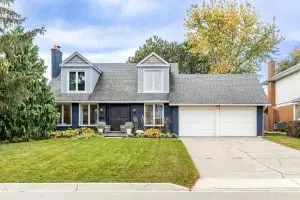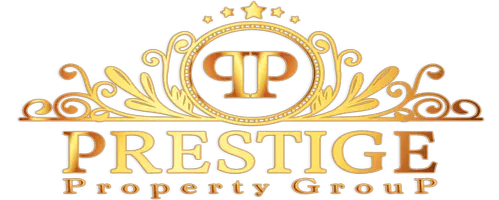Starter Homes Are Disappearing—Are Modular and Manufactured Houses the Answer?
A traditional detached two-bedroom single-family house—often called “a starter home”—costs upward of $1 million in a majority of states today.
It’s a contradiction rich with irony: Starter homes were meant to be a leg up to equity and long-term stability, paving the way to generational wealth for Americans. But a family today needs $250,000 in savings for a down payment, a combined income of close to $225,000, and enough cash flow to comfortably float a monthly mortgage payment of $6,400.
Who starts out like that?
Very few people, it turns out. Which is partly why the share of first-time homebuyers has shrunk to a historic low of 24% of home sales in 2024, according to research from the National Association of Realtors®.
But what many might not realize is that there’s a middle ground between buying a traditional single-family home and renting indefinitely that’s been hiding in plain sight: manufactured and modular homes.
“Many manufactured homes remain affordable options in lower-cost markets, many of which have experienced strong, sustained price appreciation as overall housing affordability has worsened,” explains Realtor.com® senior economic research analyst Hannah Jones.
And in the past 24 years, manufactured homes have appreciated almost as fast as site-built homes, according to an Urban Institute analysis of FHFA data. With entry-level supply scarce and $1 million “starter” prices proliferating, factory-built homes may be the new wealth-building alternative.
What’s what: Manufactured vs. modular vs. site-built
First, it’s worth clearing up one of the biggest misconceptions in housing: Not all factory-built homes are the same. Much of the stigma surrounding them stems from a misunderstanding of what they actually are—and what they’re not.
When people hear "factory-built," many picture outdated ideas of “mobile homes,” long associated with unsafe conditions. But the mobile homes built before 1976—before federal standards took effect—bear little resemblance to today’s manufactured and modular homes, which are designed, inspected, and financed under modern codes.
Today, manufactured homes are built on a permanent steel chassis to federal HUD standards. They can be titled as real property if the owner also holds the land and the home is affixed. However, when the land is leased—as it often is—financing typically comes through chattel loans instead. That difference in financing is key to appreciation, which we’ll touch on later.
Modular homes, by contrast, follow state and local building codes (IRC or IBC) rather than the HUD code, explains Sean Roberts, CEO of Villa Homes, a modular home builder.
"Modular homes, built to the prevailing local building code, are essentially the same as a site-built home,” he says. “The difference is how the materials and components of the home are assembled: in a controlled, high-efficient factory setting or assembled on-site.”
In other words, “The end product is effectively the same, the difference is in how it is put together,” Roberts says.
So what’s a site-built home? Almost exactly what it sounds like. These are the traditional standards: framed, finished, and inspected entirely on-site, piece by piece, under local code enforcement.
The real dividing lines, then, have little to do with whether a home rolled out of a factory. They come down to the code it’s built to, who owns the land beneath it, and how it’s financed—three factors that ultimately determine how a home appreciates, how it’s taxed, and how easily it can change hands.
Appreciation in near lockstep
For all their nuanced differences, there’s one area where manufactured and site-built homes are strikingly similar: appreciation rates.
From 2000 to 2024, site-built homes appreciated 212.6%, offering a healthy return on investment within the life span of a typical 30-year mortgage. Manufactured homes appreciated 211.8%—a near identical rate, according to the Urban Institute’s analysis of FHFA data. It’s worth noting that the data did not segment out modular homes, presumably because they are built and financed to the same standard as site-built houses.
And in the past 10 years, appreciation rates for manufactured homes have actually outpaced those of site-built homes.
“Manufactured housing is benefiting from the same market forces as site-built homes, but starts from a lower price point,” explains Jones. “With traditional starter homes increasingly out of reach, any habitable, financeable option with a lower monthly cost is drawing strong demand.”
But these findings come with a major caveat: The data excludes manufactured homes on leased land, where appreciation is typically weaker. That’s partly because land’s total share of home value has increased sharply in the past decade, jumping from just under 36% in 2012 to over 57% in 2023, according to data from the American Enterprise Institute.
Without owning the land, homeowners become vulnerable to lot rent increases, poorly maintained facilities, and a smaller buyer pool—all of which are reflected in their home value and appreciation rate.
Construction costs are worlds apart
With appreciation rates neck-and-neck, the cost gap between traditional and factory-built homes becomes a defining difference.
The average new single-family home was sold for $665,298, with 64% of that price tied directly to construction costs and 14% to land, according to the National Association of Home Builders’ 2024 Construction Cost Survey. On a per-square-foot basis, that’s roughly $162 per foot, the highest figure ever recorded by NAHB.
By contrast, factory-built homes—whether modular or manufactured—can often be produced for a fraction of that price.
“When using factory-built construction, on-site construction timelines can often be two to four times faster (and more certain with less risk of delays) than comparable on-site construction methods,” says Roberts. “Construction costs can be lower, too, though it depends on what’s being built and where.”
With lot availability shrinking and the average home size creeping back up to 2,647 square feet, factory-built housing offers an alternative path—one where buyers can still access new construction without six-figure land costs or a yearlong build timeline.
Or, in Roberts’ words: “We’re big believers that factory-built homes are an important and highly scalable part of the housing ecosystem, especially for adding more entry-level homes that are attainable for everyday people.”
Will it last? Conditions to watch
It seems like a deal too good to be true: an equivalent home at a fraction of the cost. So, will the same conditions that have driven home appreciation for manufactured, modular, and site-built homes continue?
In short, yes. The forces driving home appreciation of all varieties don’t appear to be fading anytime soon. With entry-level housing still scarce and expensive, demand for any livable, financeable alternative remains strong.
“These conditions are likely to persist as long as entry-level housing remains scarce and expensive,” says Jones. “However, if new, affordable homes on owned land are built at scale, manufactured homes on rented land, which already show weaker appreciation, could lose appeal.”
For now, supply constraints continue to prop up values. As long as developers fail to build enough affordable homes to meet demand, the scarcity premium will keep manufactured housing competitive; and as long as building traditional site-built homes keeps climbing, the time and cost savings of modular homes will keep them an attractive option.
Financing access also plays a role. Wider availability of conventional, FHA, or VA loans for real-property manufactured homes helps broaden the buyer pool and support prices. By contrast, reliance on chattel loans—shorter-term and higher-interest—tends to cap resale potential.
Local policy could also prove decisive. Zoning reforms that allow manufactured or modular homes on infill lots or smaller subdivisions make it easier for buyers to find and resell homes, helping maintain healthy comps. Exclusionary zoning, on the other hand, limits where these homes can go, suppressing liquidity and appreciation.
Could factory-built be the new starter home?
For first-time buyers boxed out of traditional starter homes, factory-built housing could offer something increasingly rare: a real foothold in the market. When purchased under the right conditions, manufactured and modular homes can serve as an equity-building bridge between renting and full homeownership.
The key, experts say, is in the setup. Manufactured homes placed on owned land and titled as real property appreciate more consistently and qualify for conventional, FHA, or VA financing. That makes it possible for buyers who plan to stay put for at least five or more years to build meaningful equity. That appreciation can then be reinvested into a future trade-up purchase, transforming what was once a “temporary” solution into a stepping stone toward long-term ownership.
Modular homes, meanwhile, carry an even stronger case. Because they’re built to the same local codes as site-built houses, they appraise and finance the same way—often with the added benefits of faster construction and lower costs.
And that's exactly what a starter home was always meant to be: maybe not a forever home, but a meaningful step toward it.
Categories
Recent Posts










GET MORE INFORMATION

